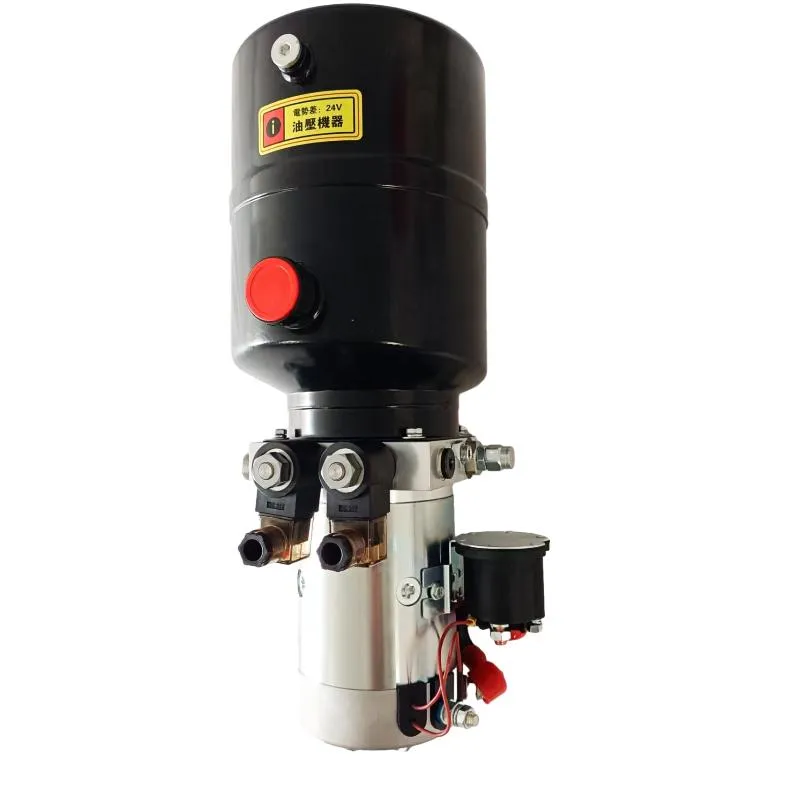Nov . 24, 2024 14:11 Back to list
Plunger Hydraulic Cylinder Solutions for Efficient Power Transmission and Performance Optimization
Understanding Plunger Hydraulic Cylinders A Comprehensive Overview
Hydraulic cylinders are essential components in various industries, playing a crucial role in the operation of machinery and equipment. Among the myriad of hydraulic cylinder designs, plunger hydraulic cylinders are particularly noteworthy for their unique structure and functionality. In this article, we will explore the anatomy, functioning, applications, and advantages of plunger hydraulic cylinders.
What is a Plunger Hydraulic Cylinder?
A plunger hydraulic cylinder is a type of actuator that converts hydraulic energy into mechanical motion. Unlike standard hydraulic cylinders that use a piston, a plunger cylinder employs a plunger that moves linearly within a cylindrical casing. This design allows for high precision and control in applications requiring force and motion.
Anatomy of a Plunger Hydraulic Cylinder
The core components of a plunger hydraulic cylinder include
1. Cylindrical Body This forms the outer shell of the cylinder. It is designed to withstand high pressure and often made from durable materials like steel or aluminum.
2. Plunger The plunger serves as the moving element. It can be designed for various shapes and sizes depending on the application, ensuring a reliable and effective performance.
3. Hydraulic Fluid The medium that transmits power within the cylinder. The hydraulic fluid is pressurized, sliding past seals and into the cylinder to move the plunger.
4. Seals To prevent fluid leakage and maintain consistent pressure, seals are critical in the assembly. They ensure that the hydraulic fluid remains contained within the cylinder while allowing for smooth movement of the plunger.
How Plunger Hydraulic Cylinders Work
plunger hydraulic cylinder product

The operation of a plunger hydraulic cylinder is relatively straightforward. When hydraulic fluid is pumped into the cylinder, it exerts pressure against the plunger. This pressure causes the plunger to move, convert the hydraulic energy into linear mechanical motion. The extent of this movement depends on the fluid pressure applied and the design of the plunger. By varying the pressure of the hydraulic fluid, operators can achieve precise control over the speed and force exerted by the plunger.
Applications of Plunger Hydraulic Cylinders
Plunger hydraulic cylinders find applications across various sectors, including
- Manufacturing Used in automation and robotic systems to lift, move, or position materials and components. - Construction Employed in heavy machinery like excavators and forklifts for lifting and adjusting large loads. - Aerospace Utilized in landing gear mechanisms and component testing systems. - Agriculture Found in tractor equipment and machinery for enhancing productivity.
Advantages of Plunger Hydraulic Cylinders
1. High Precision Plunger cylinders provide precise control over movement, making them ideal for applications requiring accuracy.
2. Compact Design Due to their design, plunger cylinders often have a smaller footprint compared to traditional hydraulic cylinders, saving valuable space.
3. Durability With high-quality materials and seals, these cylinders are designed to withstand harsh operating conditions, enhancing their lifespan and reliability.
4. Versatility They can be adapted for various applications, making them suitable for numerous industries.
Conclusion
Plunger hydraulic cylinders are fundamental to many industrial processes, providing efficient and reliable motion control. Their unique design, coupled with superior precision and durability, makes them a preferred choice for numerous applications. As industries continue to evolve, the demand for innovative solutions like plunger hydraulic cylinders will remain strong, underscoring their significance in modern engineering and technology. Understanding their functionality and benefits allows engineers and operators to make informed decisions that enhance productivity and efficiency across various sectors.
-
Fork Lift Power Units - Hebei Shenghan | Efficiency, Reliability
NewsJul.13,2025
-
1.5-Ton Turbocharged Cylinder-Hebei Shenghan|Hydraulic Solution,Energy Efficiency
NewsJul.13,2025
-
Auto Hoist Power Units-Hebei Shenghan|Efficiency&Industrial Lifting
NewsJul.13,2025
-
Double Acting Power Units-Hebei Shenghan|Hydraulic Solutions,Industrial Efficiency
NewsJul.13,2025
-
1.5 Ton Lifting Cylinder 70/82-40-290-535 - High-Performance Hydraulic Solution | Hebei Shenghan
NewsJul.13,2025
-
Fork Lift Power Units - Hebei Shenghan | Efficiency&Reliability
NewsJul.13,2025
